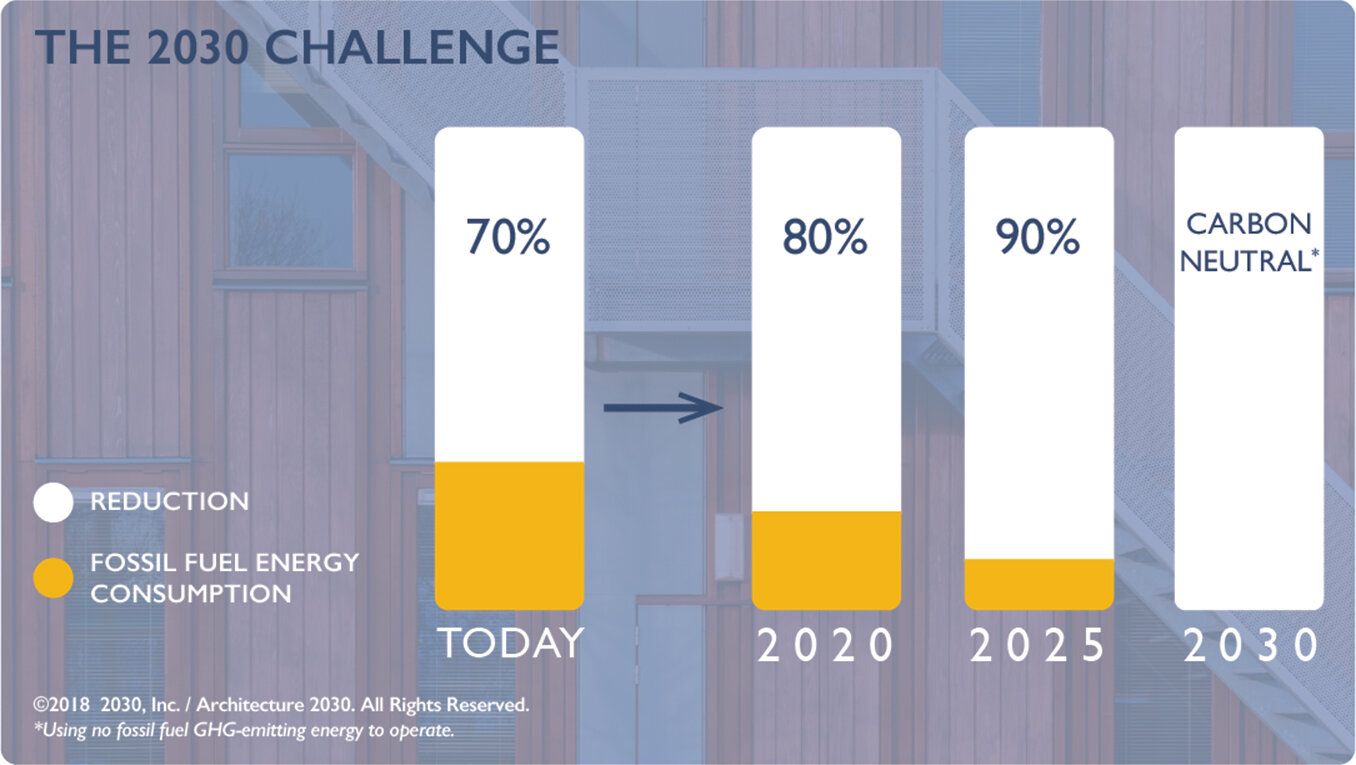I recently finished up two meetings with the American Institute of Architects (AIA). The meetings were focused on how the AIA, and all architects and builders, are to work towards making buildings as sustainable and resilient as possible. I left both meetings with a sense that the task ahead will be very challenging, but the stakes are huge.
I serve on two national committees for the AIA. I am the national co-chairman of the 2030 Commitment Working Group. The 2030 Commitment’s goal it is to get all architects to design their buildings to net zero carbon by 2030. I also am on the AIA’s Sustainability Leadership Group (SLG). The SLG oversees strategic planning for the various sustainability groups.

2030 Commitment Working Group
The 2030 Commitment, a direct offshoot of the 2030 Challenge, provides a framework for efficiency targets for energy reductions for various building types in various climatic regions. It is also designed to positively impact a design firm’s culture so that these reductions are integrated into how a firm operates. The idea is that all projects are to be efficiently designed, not just a few “superstar” projects that we all seem to have.
Everyone looking at the camera is a member of the AIA’s national 2030 Commitment WG.
Our group recent meet in Kansas City (which I had never been to before – GREAT BBQ!) to review how we are going to make the program easier to use, provide a clearer business case to architects, and begin to integrate carbon metrics into the program.
The program is already seeing results. In the most recent annual report, firms in the program have abated 17.8 million metric tons of CO2e in the last year. That is the equivalent to the carbon sequestered by 21 million acres of forest annually. That’s nearly as big as the state of Maine. But we need to step up our efforts even more. The three-year goal is to double the number of signatories in the program and double the rate of reporting by those firms.
The reduction targets, currently at 70%, increase by 10% every five years until they are at net zero by 2030. At NextHaus Alliance, we are routinely achieving that 70% reduction target on the homes we design. Next year, that target increases to 80%, a mark that we fully intend to meet.

Sustainability Leadership Group
The AIA’s Board of Directors just passed a groundbreaking resolution on Climate Change. The resolution was introduced at the AIA’s national convention in Las Vegas and was signed by 50 members, including myself, to formalize leadership focused on climate action. The three parts of the resolution included a declaration of urgent climate imperative for carbon reduction, transforming the way firms operate to achieve zero carbon work, and focusing others outside the AIA on this goal. The vote was an overwhelming 93% to 7% (who are these 7% anyway?).
I just met with the SLG in Washington, D.C. to work on how to implement this and restructure the AIA. The most amazing part of this is previously, the AIA allocated 6% of their funds on sustainability initiatives. This is now going to increase to 60%, a full order of magnitude shift.
Change on the ground – and ground-up change
My firm is not that large. We submit approximately 40,000 square feet into the Design Data Exchange, the reporting tool for the 2030 Commitment, out of the three billion (!) that the 2030 Commitment tracks annually. But as part of the NextHaus Alliance, the concept of the 2030 Commitment is fully integrated into the work that we do. Saying it is part of our DNA sounds sort of cliche, but it is very true. If you could put on colored glasses that showed how efficient, sustainable or resilient a building is, that is what we wear all the time.
Buildings are the source of nearly 40% of global CO2 emissions. Being a part of these committees gives me hope that the people that make the key design decisions are being steered in the right direction for the benefit of the environment as a whole. I feel that I am in a unique position – being a member of these committees is so rewarding knowing the impact that they are having, while at the same time the work we do at NextHaus Alliance is on the same plane, but done at a personal level. Both scales of effort are needed to address climate change.
Nathan Kipnis, FAIA is the co-founder of NextHaus Alliance and Founder & Principal of Kipnis Architecture + Planning in Evanston.
Back to News & Articles